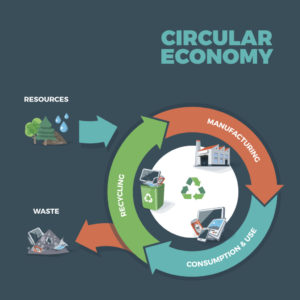
Why the circular economy is key to the post-Covid recovery?
Building a circular economy will help to bring about the economic benefits that government leaders are looking for.
The wheels of the circular economy have slowed over the past few years as the Covid-19 pandemic has led to an explosion in waste

Increased material efficiency means less waste and more capital saved, and new business models that reuse rather than dispose, or use waste as goods, create new kinds of jobs and business potential that could help revive the global economy.
But though there have been set backs, the post-Covid recovery is an opportunity to move away from the traditional linear take-make-waste model towards a circular economy.

Under pressure to reinvent fashion’s ‘take-make-dispose’ business model, brands and retailers must get their supply chain partners involved. How can manufacturers accelerate the shift towards a circular economy?
The fashion industry, founded on billions of consumers getting dressed up with places to go, has been a major casualty of the Covid-19 pandemic.
Its profits are expected to dive by 93 per cent in 2020, and global revenues are projected to shrink by 27 to 30 per cent compared to the previous year, according to consulting firm McKinsey and industry intelligence provider The Business of Fashion.
As the pandemic led to retail stores being shut and people across the world being confined to their homes, industry observers called for a departure from a business model that relies on selling ever more unnecessary products to customers, at prices that leave millions of farmers and factory workers without viable livelihoods.
What do you think?